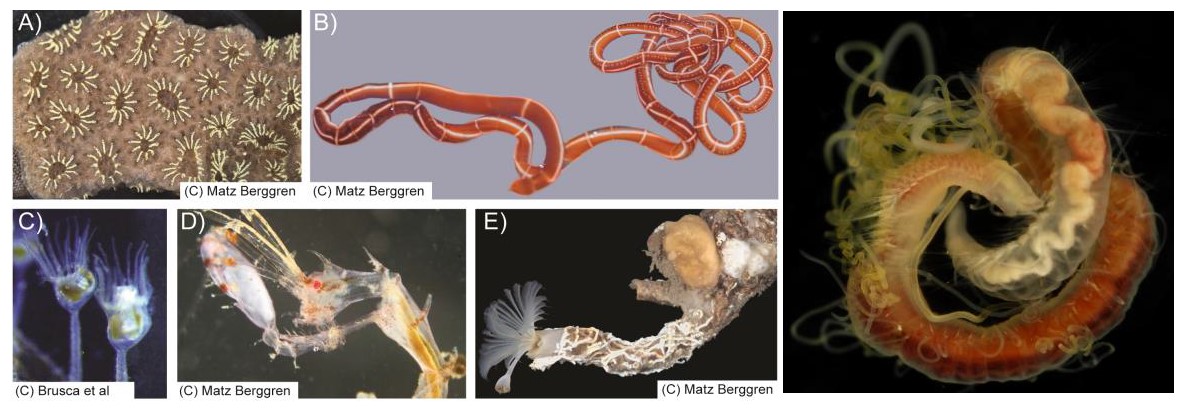Considering animals most people think about vertebrates and thereby especially mammals and birds. These are often considered the most sophisticated and evolutionary successful animals on earth. However, this is not true taking into account evolutionary history, biodiversity, ecology or biomass. Invertebrates outshine vertebrates in all these categories. Moreover, invertebrates have evolved novel structures and inhabited habitats unoccupied by vertebrates. Hence, invertebrates have much to teach us about evolution in general and in particular. On the other hand, except for a few flagship species or groups invertebrates are heavily understudied, especially considering marine invertebrates. The latter are especially important as all animal live depends on water and originated from the marine realm. Hence, understanding the evolution of marine invertebrates will help us to understand evolution at much more detailed and complete level.
The topics of these Master projects will be part of two Artsdatabanken-projects “Assessing biodiversity in the marine algae belt” and “Cirratulid polychaetes in Norwegian waters: A museum based approach to species diversity and distribution”. For understanding the evolution of marine invertebrates, we also need to assess their distribution. The marine algae belt comprising kelp forests, seagrass meadows and rocky reefs with coralline red seaweeds is one of the most active primary producing environments in the sea. It also harbors are great diversity of animals including sea squirts, ribbon worms, nick worms, serpulid worms, spionid worms and ghost shrimps. Similarly, cirratulids, another group of worms, is common and abundant from shallow to abyssal marine benthic environments, where it plays an important role in the food web and is often abundant in these environments. The species of these groups occupy important ecological functions as herbivores, predators and filter-feeding organisms and can be sessile or agile as well as solitary or colonial. However, the knowledge about their taxonomy and distribution in Norway is at best poor and in dire need of improvement. In these projects, we conducted field inventories along the Norwegian coastline and will continue to do so in the Oslofjord. Besides this, the next steps now include species identification, working with museums material and to map the distribution comparing historical records to our data. Hence, if you are interested in biodiversity and the impact of climate change on marine habitats contact us and we can discuss possible Master projects in this part.

What you will learn: You will learn to conduct field surveys, taxonomic identification and distribution mapping. This will include, among others, molecular barcoding and microscopy. You will apply programs for distribution mapping and conduct statistical analyses of your results.
What we offer: First and foremost, we offer a friendly and kind mentoring environment. We offer a membership in ForBio (the research school in biosystematics) where you will be able to take courses in several places in Norway. You will potentially be able to attend international courses if they fit with the objectives. You will be able to participate in a national conference (ForBio meeting) and potentially in an international conference depending on funding. If you are interested, we will be able to discuss travel opportunities and a travelling period abroad.
What we expect from you: Commitment and dedication.
Outcomes: One (or more) scientific publications, conference communication.
Supervision and teaching: You will be supervised by Torsten Struck, Mael Grosse, Ana Teresa Capucho (all NHM Oslo), & Sonja Leidenberger (Sk?vde University).
For further inquiries, please contact Torsten Struck (t.h.struck@nhm.uio.no).